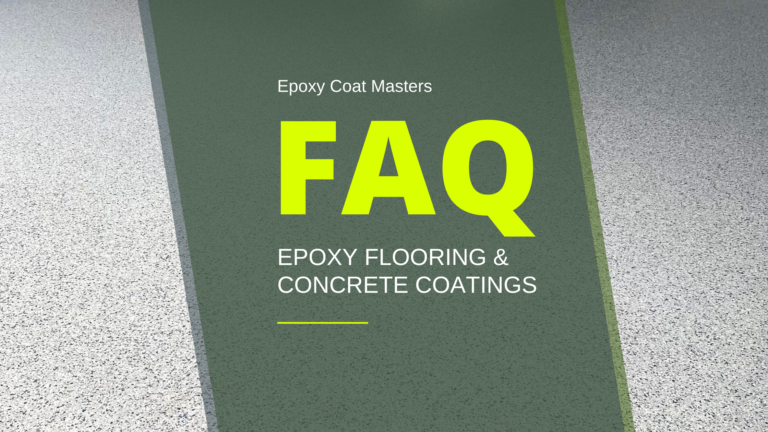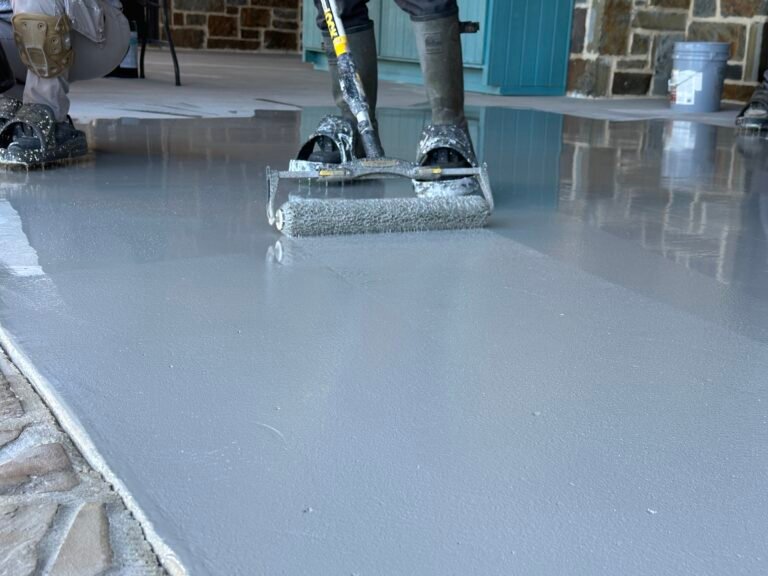I Want an Epoxy Garage Floor. How Do Keep It from Turning Yellow?
You’ve decided that you want an epoxy garage floor. You’re typing search queries like “epoxy flooring,” “epoxy garage coating,” or “garage flooring near me,” hoping to find the perfect solution. But you’ve also heard the horror stories: epoxy floors turning yellow over time, especially under the East Texas sun. How do you avoid that dreaded discoloration? Is epoxy really the best option – or are there more durable and modern alternatives to an epoxy garage floor?
Below is a Q&A-style exploration that addresses your burning questions about epoxy flooring, why it tends to yellow, and how to prevent it. We’ll also consider whether something like polyaspartic might be a better long-term investment for your garage. If you’re debating the pros and cons, read on!
Q1: What Makes an Epoxy Garage Floor Turn Yellow in the First Place?
Short Answer: UV exposure and oxidation.
Long Answer: Epoxy resins generally aren’t UV-stable, meaning direct sunlight (or even strong ambient light) can break down the resin bonds. Over time, this leads to an amber or yellow hue, particularly noticeable if your garage door is frequently open. Additionally, some epoxy products can undergo oxidation when exposed to oxygen and moisture, intensifying the yellowing effect.
Pro Tip: If your garage has big windows or you park half-in, half-out with the door open, you’re more likely to see yellowing occur.
Q2: Can I Choose an Epoxy Brand That Won’t Yellow?
Short Answer: Some epoxies contain UV inhibitors, but they’re still less stable than polyaspartic.
Detailed Explanation: While certain “UV-resistant” epoxy formulations exist, they often only delay yellowing rather than prevent it entirely. These variants can be pricier, and many still require a topcoat containing UV blockers. Even then, long-term color stability can be questionable under intense sun—like what we get in Tyler, Whitehouse, or anywhere else in East Texas.
Q3: What Can I Do to Minimize Yellowing If I Already Have an Epoxy Garage Floor?
- Protect from Direct Sunlight
If possible, keep the garage door closed during peak sun hours. - Apply a UV-Stable Topcoat
Some homeowners add a clear topcoat with UV inhibitors over an existing epoxy floor. This can slow down the process. - Limit Harsh Chemicals or Excessive Heat
High temperatures and certain chemicals can accelerate resin breakdown, so be mindful of how your floor is used.
Pro Tip: Regular cleaning (using mild, pH-neutral solutions) can also help maintain surface clarity, though it won’t stop underlying UV degradation.
Q4: Is There a Better Alternative to Epoxy If I’m Worried About Yellowing?
Answer: Absolutely – polyaspartic.
Reasons:
- UV Stability: Polyaspartic contains built-in UV blockers, so it resists discoloration far longer.
- Fast Cure Time: Unlike epoxy, which might take days to set, polyaspartic floors can often handle foot traffic in hours and are ready for vehicles in about 48 hours.
- Durability & Aesthetics: Polyaspartic systems are frequently paired with decorative flake or quartz broadcast, adding texture, slip-resistance, and a modern look that stands the test of time.
Q5: How Do I Decide Between Epoxy and Polyaspartic?
- Consider Your Sun Exposure: If your garage faces direct sunlight for hours a day, a polyaspartic solution drastically reduces the risk of color changes.
- Budget vs. Longevity: Epoxy might be cheaper upfront, but frequent re-coats or aesthetic dissatisfaction from yellowing could cost more in the long run.
- Installation Timeline: If you need a quick turnaround, polyaspartic is typically the winner due to faster cure times and lower downtime.
Key Takeaways
To prevent an epoxy floor from turning yellow, you’d need meticulous product selection (ideally with UV inhibitors) and possibly a protective topcoat. Even then, the Texas sun may eventually take its toll. If you want an almost-guaranteed solution to color stability and top-tier performance, polyaspartic stands out as the modern choice – featuring UV blockers, high chemical resistance, and decorative flake or quartz options for slip resistance.
Final Word: If you’re aiming for a garage floor that won’t turn yellow and can handle East Texas climate extremes, contact Epoxy Coat Masters. We’ll guide you through the differences between epoxy and polyaspartic, ensuring you choose a floor that remains vibrant and beautiful for years to come.







